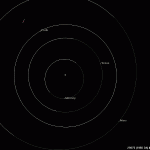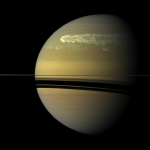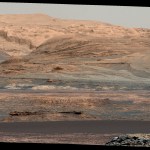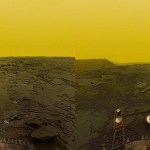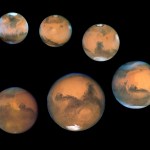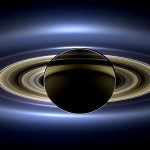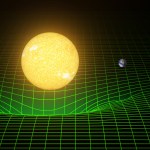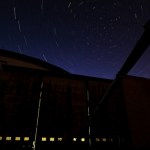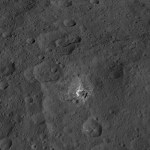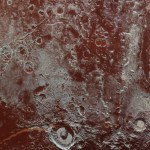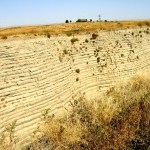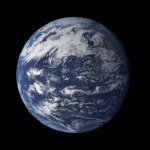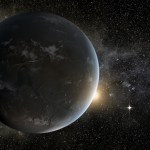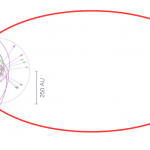Solar System
"By refocusing our space program on Mars for America's future, we can restore the sense of wonder and adventure in space exploration that we knew in the summer of 1969. We won the moon race; now it's time for us to live and work on Mars, first on its moons and then on its surface." -Buzz Aldrin
When the Curiosity Rover landed on Mars in August of 2012, it seemed that we had the ultimate successor to Opportunity in place. That older, over-engineered rover is still going after more than 12 years on the red planet, and Curiosity is leaps and bounds ahead in terms of technology: nuclear powered,…
"To explain all nature is too difficult a task for any one man or even for any one age. 'Tis much better to do a little with certainty & leave the rest for others that come after you." -Isaac Newton
Perhaps the greatest, most successful scientific theory of the past century is Einstein's General Relativity, our theory of gravitation that has answered every challenge to it for the past 101 years with resounding success. Yet before that, Newton's gravity did the same thing for more than twice as long! The culprit that finally brought the universal theory of ground was incredible in its…
"More days to come / new places to go
I've got to leave / it's time for a show
Here I am / Rock you like a hurricane!" -The Scorpions
On Earth, category 5 hurricanes cause devastation wherever they make landfall, bringing sustained winds, rain, destruction and -- in many cases -- casualties. But despite how strong and massive these storms can be, they're just peanuts compared to what happens on our Solar System's gas giants.
Jupiter's great red spot (from Cassini, imaged in 2000) and Earth (imaged from Apollo 17 in 1972), shown together for size comparison. Image credit: NASA / Brian0918 at…
"Actually I think Art lies in both directions - the broad strokes, big picture but on the other hand the minute examination of the apparently mundane. Seeing the whole world in a grain of sand, that kind of thing." -Peter Hammill
When fine-and-coarse-grained sand is carried by the winds across uneven terrain, sand dunes form here on Earth. But on Mars, where the atmosphere is only 0.7% what it is here, the sand is made of different composition and the winds gust to up to 60 mph (100 kph), do sand dunes behave the same way?
A close-up of the dunes from the Curiosity rover. Image credit: NASA…
"The phenomena of nature, especially those that fall under the inspection of the astronomer, are to be viewed, not only with the usual attention to facts as they occur, but with the eye of reason and experience." -William Herschel
We typically think of Saturn as our Solar System’s ringed world, thanks to its huge, glorious rings spanning nearly three times the diameter of the planet from tip-to-tip. But the other three gas giant worlds have their own impressive ring systems, with Jupiter, Uranus and Neptune boasting four, thirteen and five rings, respectively.
A stitching together of two 591…
"We are not learning to view ourselves as an advanced, evolving civilization. That is what we really must learn to do, in due course, if we were to survive. All of that will take place, in due course, and we will be able to explore solar system. We will be able to go beyond it, provided we get our act together and learn to live as a civilization." -Edgar Mitchell
There are a great many world with opportunities for life, both in our Solar System and beyond, and we’ve only just begun to discover them. Perhaps Enceladus, Europa or Titan harbor some form of life right now, and perhaps Mars or…
"This is the plan. Get your ass to Mars, and go to the Hilton Hotel and flash the fake Brubaker I.D. at the front desk, that's all there is to it. Just do as I tell you." -Total Recall
Every two years, Earth passes Mars in orbit, as the inner, faster world overtakes the outer one. This year, it happens when Earth approaches aphelion, its farthest point from the Sun, while Mars approaches perihelion, or its closest approach.
Earth’s and Mars’ orbits, to scale, as viewed from the Solar System’s north direction. Image credit: Wikimedia Commons user Areong under a c.c.a.-s.a.-2.5 license.
On…
“This then, I thought, as I looked round about me, is the representation of history. It requires a falsification of perspective. We, the survivors, see everything from above, see everything at once, and still we do not know how it was.” -W.G. Sebald
In the 1600s, the earliest telescopes saw that Saturn had "ears," while later observers all the way back then finally saw their true nature: a ringed system with complex gaps, bands and colorations throughout. Since then, Saturn’s rings have been a source of wonder and puzzlement to skywatchers everywhere. The only ring system visible…
"I'm here for several reason, Mr. Pepin, first of all for aid. When something tragic happens in our skies, we do our utmost to extend sympathy. But sympathy without action,that's an empty emotion. Mainly I'm here for the purposes of reentry."
"I don't understand."
"Adjustment," Harold said, "to earth. I'm here to make sure you didn't leave your whole life in the sky." -Adam Ross
When we launch a satellite into orbit around the Earth, we expend a tremendous amount of fuel and energy to make it happen. From hundreds of miles up -- well above the definition of space -- these satellites zip…
"This job is a great scientific adventure. But it's also a great human adventure. Mankind has made giant steps forward. However, what we know is really very, very little compared to what we still have to know." -Fabiola Gianotti
On Earth, star trails inevitably appear in any long-exposure image unless you account for the rotation of the Earth, requiring specialized mounts, advanced pointing software, or both. But from space, those same familiar motions appear, albeit for very different reasons.
Image credit: Chris Luckhardt at flickr, of a long-exposure photograph of the stars from…
"TW Hydrae is quite special. It is the nearest known protoplanetary disc to Earth and it may closely resemble the Solar System when it was only 10 million years old." -David Wilner
For hundreds of years since the realization that Earth and the other planets orbited the Sun, humanity had only hypotheses about how planets formed around stars. The consensus was that gas clouds collapsed along one direction first, forming a disk, which then rotated and formed instabilities, leading to the development of planetary systems.
Image credit: Mark McCughrean (Max-Planck–Inst. Astron.); C. Robert O’Dell…
"Although impact processes dominate the surface geology on Ceres, we have identified specific color variations on the surface indicating material alterations that are due to a complex interaction of the impact process and the subsurface composition." -Ralf Jaumann, Dawn scientist
NASA's Dawn mission has just revealed a huge suite of data about Ceres, our Solar System's closest dwarf planet. No longer merely taking pictures, at its orbital altitude of just 240 miles (385 km), it's now gathering information from many instruments, measuring the chemical composition and neutron/gamma ray fluxes…
"This is in a real sense the capstone of the initial missions to explore the planets. Pluto, its moons and this part of the solar system are such mysteries that New Horizons will rewrite all of the textbooks." -Alan Stern
The New Horizons mission surprised everyone last July when it revealed Pluto to be a world that varied significantly in both terrain and color. Instead of a uniform, reddish-hued icy world, it was revealed to have mountains, craters, smooth plains, pitted regions and more, which range in color from white to yellow to deep red.
Image credit: NASA/JHUAPL/SwRI, of the…
“Whenever I gaze up at the moon, I feel like I’m on a time machine. I am back to that precious pinpoint of time, standing on the foreboding — yet beautiful — Sea of Tranquility. I could see our shining blue planet Earth poised in the darkness of space.” -Buzz Aldrin
Seen from afar, Earth is often described as a pale blue dot. But why is our planet blue? Is it because the skies are blue? That can't be right, or the clouds and icecaps would appear blue-hued as well. Is it because the blue skies are reflected by the oceans? That can't be right either, or we wouldn't see different shades of blue…
"Will you or won't you? Should you or shouldn't you?
Use this day to do something daring, extraordinary and unlike yourself." -Vera Nazarian
The need for a February 29th, once every four years or so, doesn't just give us an extra day this year, but it keeps the calendar from drifting and failing to align with the seasons. Even so, the scheme we have worked out today -- where years divisible by 4 but not those divisible by 100 unless also divisible by 400 get an extra day -- isn't perfect, and will get worse as time goes on.
Image credit: flickr user Kevin Gill, under c.c.a.-s.a.-2.0. A quick…
“The world communicates subtly. Most people don't hear or see the signs because they're so wrapped up in their day-to-day lives.” -Doug Cooper
If you wanted to see if a planet was inhabited in Star Trek, all you had to do was scan for signs of life. With current technology, that's really hard to do! We rely on cues from all across the electromagnetic spectrum to identify biosignatures, such as analyzing the atmosphere, land and oceans for molecular signatures.
This image from Sentinel-2A shows how Saudi Arabia’s desert is being used for agriculture. The circles come from a central-pivot…
"We stand on a great threshold in the human history of space exploration. If life is prevalent in our neighborhood of the galaxy, it is within our resources and technological reach to be the first generation in human history to finally cross this threshold, and to learn if there is life of any kind beyond Earth." -Sara Seager
25 years ago, there were no planets known around Sun-like stars other than our own. Just 5 years ago, there were no rocky planets known around Sun-like stars other than our own. And today, we don't have any direct images of those rocky worlds potentially suitable…
“Finding out that something you have just discovered is considered all but impossible is one of the joys of science.” -Mike Brown
Earlier today, the team of Pluto-killer Mike Brown and Konstantin Batygin announced that they had found evidence of a ninth planet in our Solar System beyond the orbit of Pluto, larger and more massive than even Earth.
However, a closer inspection of the work shows that they predict a few things that haven't been observed, including a population of Kuiper belt objects with large inclinations and retrograde orbits, long-period Kuiper belt objects with opposite…
“Just as a Chihuahua is still a dog, these ice dwarfs are still planetary bodies. The misfit becomes the average. The Pluto-like objects are more typical in our solar system than the nearby planets we first knew.” -Alan Stern
When New Horizons approached the Pluto system last year, it discovered two vastly different worlds in Pluto and Charon. While Pluto had mountains, plains, ridges, and surface regions with vastly different properties, Charon looked more like our Moon: cold, airless, mostly uniform and full of craters.
Image credit: NASA/Johns Hopkins University Applied Physics Laboratory…
“You're on Earth. There's no cure for that.” -Samuel Beckett
In 2012, astronomers announced that the nearest star system to us, the Alpha Centauri system, possessed at least one exoplanet around it. A periodic signal that recurred just every 3.24 days was consistent with an Earth-sized exoplanet orbiting and gravitationally tugging on the second largest member of the star system: Alpha Centauri B.
Image credit: PHL @ UPR Arecibo, via http://phl.upr.edu/press-releases/aplanetarysystemaroundourneareststari….
That planet, named Alpha Centauri Bb, turns out not to actually be there. A…

